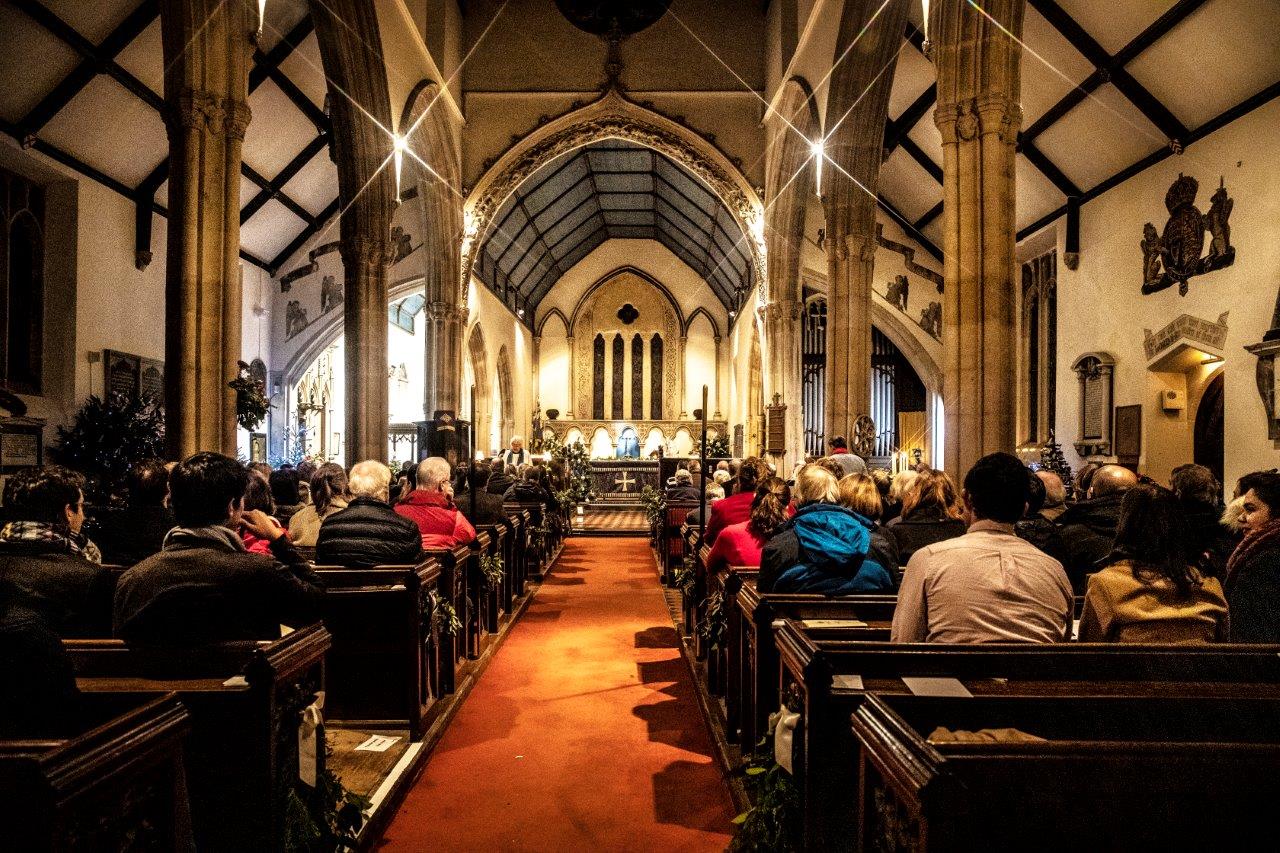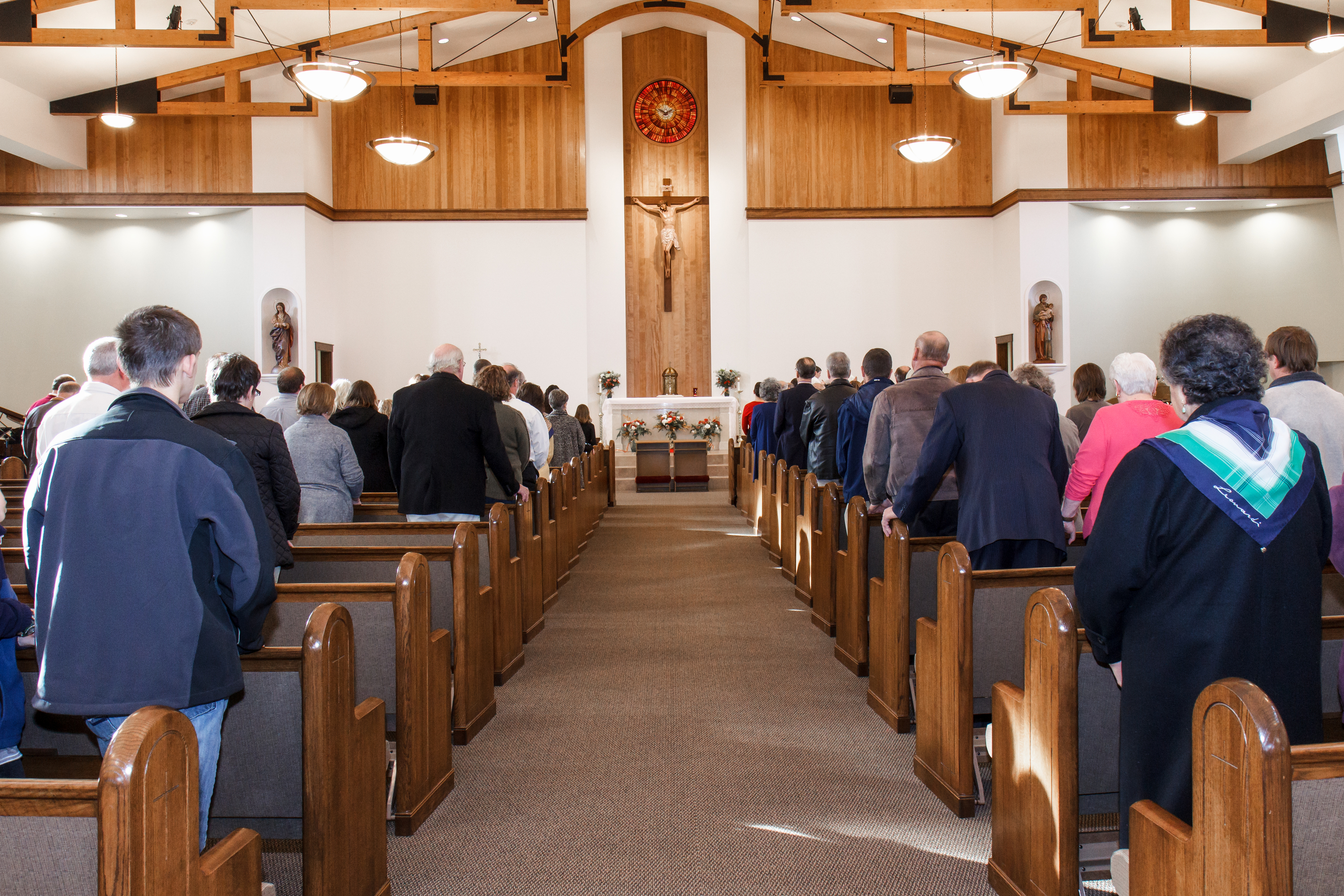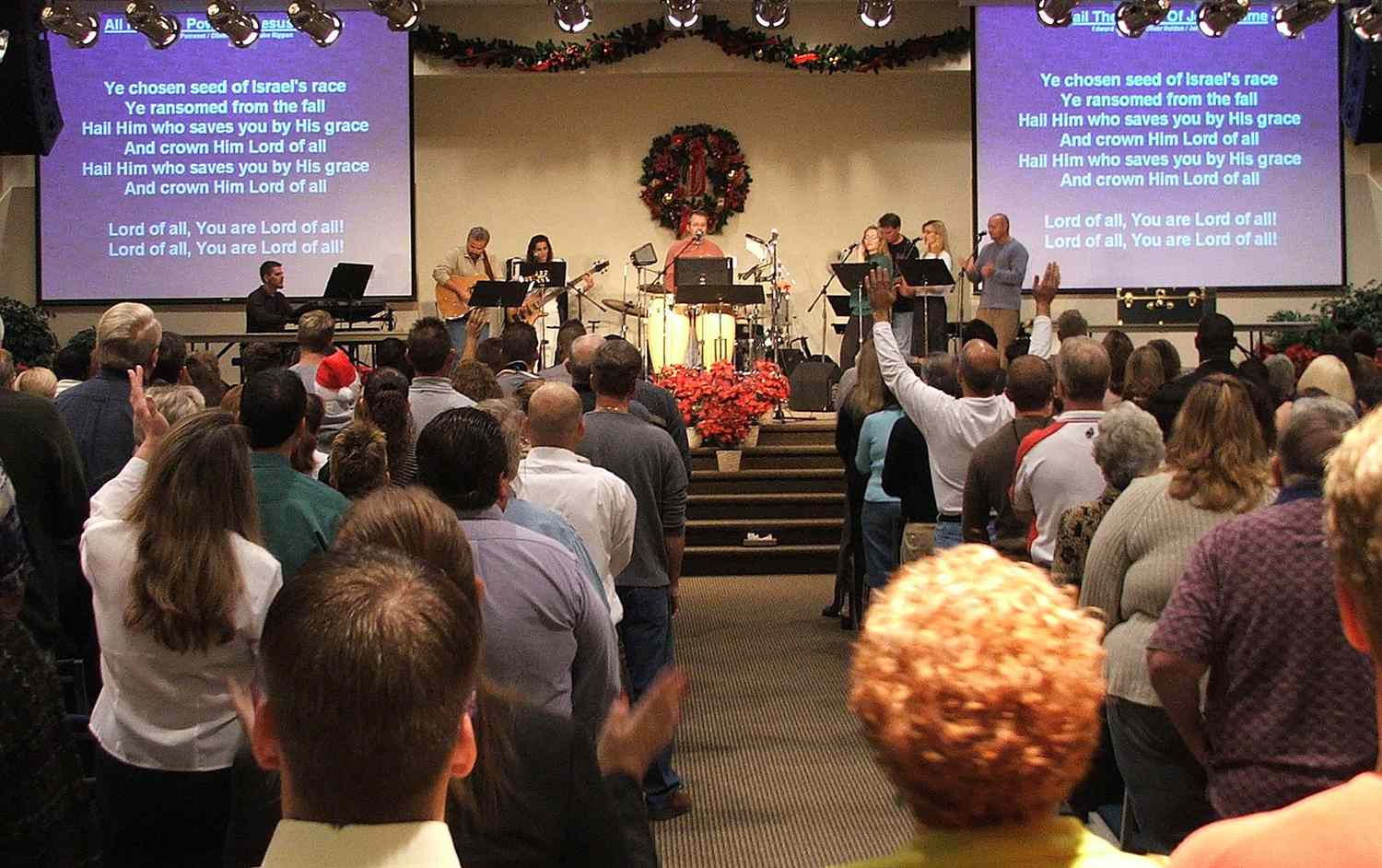The Digital Sanctuary Of Virtual Church Services
In an era dominated by technological advancements, the traditional concept of attending a physical church service has undergone a transformative shift. The advent of virtual church services has become a powerful medium for congregations to connect, worship, and foster community in the digital realm. This article delves into the multifaceted aspects of virtual church services, exploring their impact on religious practices and the challenges and opportunities they present.
Author:Daniel BarrettJan 10, 20244K Shares368.4K Views

In an era dominated by technological advancements, the traditional concept of attending a physical church service has undergone a transformative shift. The advent of virtual church serviceshas become a powerful medium for congregations to connect, worship, and foster community in the digital realm. This article delves into the multifaceted aspects of virtual church services, exploring their impact on religious practices and the challenges and opportunities they present.
Expanding Horizons - The Global Reach Of Virtual Worship
Breaking Geographical Shackles
Virtual church services represent a seismic shift in how believers experience worship, transcending the limitations of physical boundaries. Geographical constraints that once hindered congregants from various corners of the globe are shattered with a simple click. The digital sanctuary facilitates a congregation that spans continents, fostering a profound global unity among Christians. This departure from the traditional localized approach marks a paradigm shift in the way the Church connects with its followers.
A Global Tapestry Of Unity
In this new paradigm, believers, irrespective of their physical location, can seamlessly unite in worship. The virtual space becomes a meeting ground for diverse cultures, languages, and traditions, creating a rich tapestry of global Christianity. This interconnectedness not only broadens the reach of individual churches but also knits together a worldwide community of faith, emphasizing shared spiritual values that transcend geographical borders.
The Gateway To Inclusivity - Enhancing Accessibility In Worship
Beyond Physical Limitations
Virtual church services stand as a beacon of inclusivity, addressing the needs of those traditionally marginalized due to physical disabilities. The digital platform dismantles the barriers that once restricted participation, allowing individuals with physical limitations to actively engage in worship. As a result, the Church becomes more accessible, welcoming a diverse range of worshippers into its virtual fold.
Bridging Gaps In Remote Areas
The advantages of virtual worship extend beyond physical disabilities, reaching individuals residing in remote and underserved areas. For those living far from established congregations or in regions with limited access to religious institutions, virtual church services offer a lifeline. This inclusivity not only provides spiritual sustenance to individuals in remote areas but also contributes to the formation of a more comprehensive and diverse Christian community.
Fostering Unity Through Digital Means
A Unified Journey Of Faith
The digital platform becomes the common ground where believers, irrespective of their physical circumstances, can engage with their faith. As the geographical boundaries blur, a sense of unity blossoms within the virtual congregation. This unity is not just a byproduct; it is a deliberate outcome of leveraging technology to foster a shared experience of worship and spiritual growth.
Strengthening The Fabric Of Community
In the virtual realm, the Church becomes a global community where members actively contribute to the shared narrative of faith. Interactions, discussions, and collaborative worship experiences strengthen the fabric of this diverse yet interconnected community. The ability to share in the joys and challenges of faith on a global scale enhances the communal aspect of worship, reinforcing the sense of belonging among believers.
Embracing The Future - Navigating Challenges And Maximizing Potential
Addressing Digital Disparities
While the benefits of virtual worship are evident, challenges arise, particularly concerning the digital divide. Acknowledging and addressing issues related to technology accessibility ensures that the inclusivity and unity sought through virtual services are not compromised. Initiatives to provide technological resources to underserved communities become crucial for maintaining the integrity of the global digital congregation.
Balancing Tradition With Innovation
As virtual worship becomes a mainstay, the challenge lies in striking a harmonious balance between technological innovation and the preservation of traditional elements. The integration of technology should enhance, not dilute, the core essence of worship. Churches must navigate this delicate equilibrium to ensure that the evolving landscape of virtual worship remains deeply rooted in the timeless traditions of Christian faith.
Evolving Worship - Technological Tools Reshaping The Spiritual Landscape
The Pulse Of Virtual Worship
At the core of virtual church services lies the dynamic fusion of live streaming and on-demand capabilities. Congregations can now experience the heartbeat of worship in real-time or at their convenience, marking a departure from the rigidity of traditional service schedules. This technological synergy caters to the diverse needs of the modern believer, offering an array of options for engaging with their faith journey.
Breaking Temporal Barriers
Live streaming allows congregants to participate in worship synchronously, immersing themselves in the collective energy of a live service. Alternatively, on-demand services extend a lifeline to those with busy schedules or conflicting time zones, enabling them to access the spiritual nourishment of a service at their own pace. This flexibility becomes an indispensable asset, accommodating the varied lifestyles of a global congregation.
Interactive Features And Community Building - Weaving Connections In The Digital Tapestry
Real-Time Engagement
Technological innovation has birthed a new era of interactive worship, where believers are no longer passive recipients but active contributors to the communal experience. Live chat features embedded in virtual services create a real-time dialogue among congregants, fostering a sense of togetherness despite physical distances. This immediacy transforms the act of worship into a shared journey, transcending the limitations of the virtual realm.
Virtual Prayer Rooms And Beyond
The virtual realm extends beyond the physical constraints of a church building, offering a space for believers to gather in virtual prayer rooms. Here, they can intercede for one another, share personal prayer requests, and collectively seek spiritual guidance. These interactive tools go beyond the conventional boundaries of community building, creating an atmosphere where faith is not only practiced individually but also collectively nurtured.
The Symbiosis Of Tradition And Technology - Enriching Worship Experiences
Enhancing Rituals With Technological Flair
The integration of live streaming and interactive features doesn't replace traditional rituals; instead, it enriches them. Sacraments, sermons, and hymns can now be experienced in a way that transcends physical space. The communion of believers, though not physical, becomes palpable through shared moments and collective expressions of faith, blending centuries-old traditions with the immediacy of modern technology.
Nurturing Spiritual Connections
As believers share their faith journeys, struggles, and triumphs through virtual interactions, a profound sense of spiritual connection blossoms. Technology becomes the thread that weaves individuals into a cohesive digital tapestry of faith. The virtual community is not a substitute for the physical church but an extension—a space where relationships are nurtured, and the essence of Christian fellowship is celebrated in a technologically mediated environment.
The Benefits Of Online Church Services
1. Global Reach And Inclusivity:
Bridging Physical Gaps
Online church services break the confines of geographical boundaries, allowing individuals from every corner of the globe to participate in worship. This global reach fosters a sense of unity among diverse communities, transcending cultural, linguistic, and physical barriers. The digital sanctuary becomes a place where anyone, regardless of their location, can find solace in the shared experience of faith.
Embracing Diversity
The virtual platform promotes inclusivity by offering access to individuals who might face physical limitations or reside in remote areas. Those with disabilities, the elderly, or individuals in regions with limited access to physical churches can actively engage in worship, fostering a more diverse and comprehensive congregation.
2. Flexibility For Diverse Lifestyles:
Catering To Busy Schedules
In a fast-paced world, adhering to a fixed schedule for church services can be challenging. Online church services provide flexibility, allowing worshippers to tune in at their convenience. Whether it's a live broadcast or an on-demand option, this flexibility accommodates the diverse lifestyles of modern-day congregants, ensuring that spiritual nourishment is accessible to all.
Adapting To Time Zones
The global nature of online services accommodates worshippers across different time zones. No longer bound by the constraints of a specific hour, individuals can participate in live services or access recorded content, ensuring that the message of faith is available to all, regardless of their temporal context.
3. Enhanced Engagement And Interaction:
Real-Time Community Building
Interactive features embedded in online services foster real-time engagement among congregants. Live chat functions, virtual prayer rooms, and discussion forums create a digital space where believers can share their faith journey, offer support, and build lasting connections. The immediacy of these interactions strengthens the sense of community, transforming the act of worship into a collective journey.
Leveraging Technological Tools
Innovative technological tools enhance the worship experience by providing avenues for collective prayer, shared reflections, and collaborative engagement. The integration of multimedia elements, such as videos, graphics, and interactive features, elevates the overall engagement, making the virtual worship experience dynamic and participatory.
4. Adaptability In Unforeseen Circumstances:
Navigating Challenges
In times of unforeseen circumstances, such as natural disasters, healthcrises, or other emergencies, online church services offer a resilient solution. Congregations can continue to connect and worship even when physical gatherings are restricted, ensuring that the spiritual lifeline remains intact during challenging times.
Continuity Of Ministry
Online services provide a means for the Church to maintain a continuous ministry presence, reaching out to the congregation and offering spiritual support regardless of external challenges. This adaptability ensures that the mission of the Church persists, regardless of the circumstances.
5. Utilizing Resources Effectively:
Cost-Effective Outreach
Online church services can be a cost-effective means of outreach. They eliminate the need for physical infrastructure, transportation, and other associated costs, allowing resources to be redirected towards impactful ministries, community support, and global outreach initiatives.
Environmental Impact
By reducing the need for physical congregational spaces and minimizing associated travel, online services contribute to a smaller carbon footprint. This aligns with the growing awareness of environmental stewardship, allowing the Church to participate in responsible resource management.
Examples Of Innovative Online Churches To Inspire Your Virtual Worship Experience
In the ever-evolving landscape of virtual worship, certain online churches have distinguished themselves by embracing technology to create impactful and engaging spiritual experiences. Let's explore three notable examples that serve as sources of inspiration for congregations seeking to enhance their online presence.
1. Highland Park Online Church
User-Friendly Interface
Highland Park's online church stands out for its user-friendly website and virtual services. While the church primarily offers in-person options, the details provided online facilitate a seamless connection for virtual participants.
Personalized Pastoral Experience
A standout feature is the detailed information and pictures of the church's pastors. This personal touch enhances the viewing experience, particularly for individuals who may never attend an in-person service. It establishes a sense of familiarity and connection with the church leadership.
Counseling Services
Highland Park goes beyond conventional offerings by providing actual medical counseling services. A comprehensive list of available counselors, complete with biographies and pictures, is a unique aspect. Although not free, this option is valuable for Christians seeking professional counseling within a faith-based context.
2. Holy Cross Monastery Online Church
Simplicity In Digital Worship
Located in West Virginia under the jurisdiction of the Russian Orthodox Church, Holy Cross Monastery offers a minimalist approach to virtual church services. Live streaming takes precedence, especially for those with limited online activities. The website focuses on practical services for those with limited options.
Sermons, Homilies, And Podcasts
The website distinguishes itself by providing a dedicated space for those interested in reading sermons and homilies. Additionally, recognizing the rising popularity of podcasts, Holy Cross Monastery has its own podcast channel, providing an alternative for those who prefer an auditory experience.
Diverse Online Services
Holy Cross Monastery caters to a diverse audience with various online services. Whether it's reading sermons, watching live streaming, or listening to podcasts, the church acknowledges that congregants have different preferences, enhancing its appeal to a broad spectrum of individuals.
3. Willow Creek Online Church
Comprehensive Support And Engagement
Willow Creek, a larger church based in northern Illinois, offers a comprehensive virtual church experience. The website is not as visually clear as others, but it compensates with excellent details and options for support and engagement.
Assistance And Involvement
Willow Creek provides links to essential services such as food assistance, emotional support, prayer groups, home deliveries, and employment counseling. These resources offer valuable support for individuals without requiring them to leave their homes.
Focused Kids & Students Section
The Kids & Students section is notably detailed, providing options for parents and children. It includes daily videos, educational content, and parent Facebook groups and newsletters, demonstrating a commitment to engaging families in the virtual church experience.
Welcoming Connections Through Get Connected
Willow Creek's "Get Connected" section serves as an excellent introduction to the church, connecting new viewers with the welcoming committee. This church emphasizes small groups to further develop connections within the community.
4. Fellowship Waco Online Church
User-Centric Interface
Fellowship Waco's online platformboasts a user-centric design that prioritizes accessibility and ease of use. Navigating the website and virtual services is intuitive, ensuring a seamless experience for both regular attendees and newcomers.
Engaging Worship Services
The heart of Fellowship Waco's online presence lies in its engaging worship services. With a combination of live streaming and on-demand options, congregants have the flexibility to participate in real-time worship or access content at their convenience. This adaptability caters to the diverse lifestyles of the modern churchgoer.
Community Connection
One standout feature is the emphasis on community connection. Fellowship Waco leverages digital tools to foster real-time interaction among congregants. From virtual prayer gatherings to online discussion forums, the church provides avenues for believers to share their faith journey, offer support, and build lasting connections.
Virtual Church Services - FAQs
What Is Virtual Church Service?
A virtual church service is a religious gathering conducted through digital platforms, allowing worshippers to participate in religious activities remotely. These services leverage technology, such as live streaming, video conferencing, and online platforms, to provide a virtual space where individuals can engage in worship, prayer, sermons, and other religious practices. Virtual church services have become increasingly popular, especially in situations where physical attendance may be challenging or restricted.
How Do I Start A Virtual Church?
Starting a virtual church involves several key steps:
- Define Your Purpose and Vision:Clearly articulate the purpose and vision of your virtual church. Consider the goals, values, and mission you want to convey through the digital platform.
- Choose a Platform:Select an online platform that aligns with your goals. Options include video conferencing tools, dedicated church platforms, or social mediaplatforms for live streaming.
- Build a Website:Create a website to serve as the central hub for your virtual church. Include information about services, events, resources, and ways for people to connect.
- Create Online Content:Develop engaging online content such as sermons, worship sessions, and educational resources. Utilize multimedia elements to enhance the virtual worship experience.
- Set Up Virtual Gatherings:Schedule and organize virtual gatherings, including live-streamed services, prayer meetings, and interactive sessions using video conferencing tools.
- Promote Your Virtual Church:Utilize social media, email newsletters, and other online channels to promote your virtual church. Reach out to your existing congregation and explore ways to attract new members.
- Offer Support and Interaction:Implement features that allow congregants to connect with each other, seek support, and engage in discussions. Foster a sense of community in the virtual space.
- Provide Online Resources:Offer resources such as study materials, devotionals, and digital versions of religious texts to enhance the spiritual growth of your virtual congregation.
- Establish Online Giving Options:Set up secure online donation options to support the financial needs of the virtual church.
- Adapt and Iterate:Regularly assess the effectiveness of your virtual church and be willing to adapt and iterate based on feedback and changing needs.
Is Online Church A Good Thing?
The perception of whether online church is a good thing depends on individual preferences, circumstances, and theological perspectives. Here are some considerations:
- Accessibility:Online churchprovides accessibility to individuals who may be physically unable to attend in-person services, fostering inclusivity.
- Flexibility:Virtual services offer flexibility for individuals with busy schedules or those living in remote areas, enabling them to engage in worship at their convenience.
- Global Reach:Online church services can reach a global audience, breaking geographical barriers and fostering a sense of global community.
- Community Building:While virtual interactions may differ from in-person fellowship, online platforms can facilitate community building through interactive features, discussions, and support networks.
- Adaptability:Online church can adapt to unforeseen circumstances, ensuring continuity of worship and connection during challenging times, such as pandemics or emergencies.
- Cautions:Some may express concerns about the potential loss of the physical gathering experience, the impact on traditional rituals, and challenges related to the digital divide.
Conclusion
Virtual church services have emerged as a dynamic force, reshaping the landscape of religious practices in the digital age. As congregations navigate this uncharted territory, thoughtful consideration of theological, ethical, and practical aspects is essential. Ultimately, the fusion of faith and technology opens new doors for connecting believers, fostering community, and exploring the boundless possibilities of worship in the 21st century.

Daniel Barrett
Author
Daniel Barrett is a tech writer focusing on IoT, gadgets, software, and cryptocurrencies. With a keen interest in emerging technologies, Daniel offers expert analysis and commentary on industry trends. Follow him for authoritative insights into the latest tech innovations.
Latest Articles
Popular Articles



